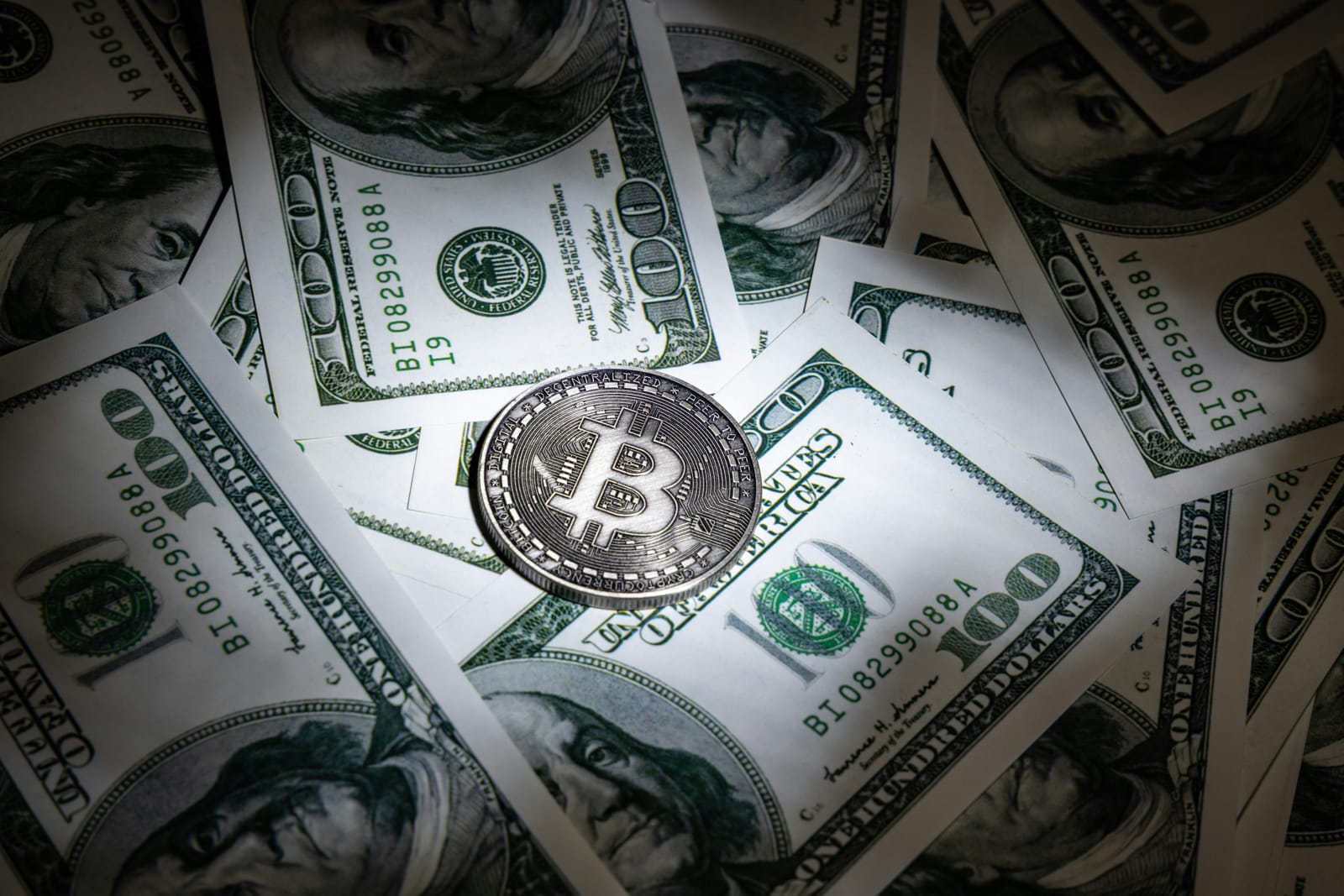None of the bitcoin-like cyber currencies can meet the three-fold requirements of a proper currency: providing efficient payments services, a safe savings instrument and an accounting numéraire (金 运 jinyun/Unsplash)
Over the more than 50 years since the floating of the US dollar, American economists have broadly agreed with US former Treasury Secretary Connolly’s 1971 message to the rest of the world: “It’s our currency but your problem.” Yet despite the gyrations in its value since, the dollar remains the currency of choice.
Pundits had predicted that America’s chronically large current account deficit would, sooner or later, cause loss of confidence in the dollar and a crisis. But the crises that occurred (the 2000 tech bubble and bust, the 2008 global financial crisis) were not caused by the dollar. Nor did they disturb its stability much. The current account deficit didn’t seem to matter.
So is there nothing more to add to the dollar story, beyond what had been recorded in the classic accounts of Barry Eichengreen?
Paul Blustein, in King Dollar: The Past and Future of the World’s Dominant Currency, identifies new challenges:
First, the reserve currency issue. Despite common resentment (or is it jealousy?), the dollar has an overwhelming advantage: its deep and liquid financial markets, backed by an effective legal system and regulation.
Countries could denominate their trade transactions in other currencies (as Saudi Arabia and China have discussed for their oil trade), but the country receiving this non-dollar currency needs to invest it. Not even the euro can provide the deep liquidity that countries require for their reserve holdings. China, with its exchange controls and opaque legal system, can’t compete.
The BRICS’ aspiration to create a common currency and so avoid trading in dollars runs into the same objection. If Saudi Arabia accumulates this BRICS currency in its reserves, where does it invest it?
Second, the weaponisation of the dollar-based international payments system. Restricting the ability of target countries to make international transfers is more recent, and more contentious. For a start, it can be bypassed, and the more it is used, the more substitutes for dollar payments will be developed. Blustein counsels caution. The “privilege” can be abused, perhaps losing the necessary cooperation of America’s allies.
The third issue may be of greatest interest: the opportunities opened by digital currencies. The starting point is the stunning popularity of cryptocurrencies. Could these replace not just the dollar, but all national currencies, and if so, what are the consequences?
The success of Bitcoin came as a great surprise to most economists (including me). But whatever its advantages for drug purchases and other illicit transactions, money laundering, cyber ransoms, and sanctions avoidance, none of the Bitcoin-like cybercurrencies can meet the three-fold requirements of a proper currency: providing efficient payments services, a safe savings instrument and an accounting numéraire.
Thus, the possible rivals to the dollar are “stable-coins” – digital currencies with a fixed value against the dollar. The greatest threat was from Meta’s Libra proposal. The United States was not ready to see this key policy instrument taken over by a private company and so killed the initiative.
But a digital instrument opens the possibilities of better, more useful currency, perhaps with in-built conditionality (for example, payment made only when specified conditions were met). Could, or should, such developments be held back?
Perhaps central banks ought to be the ones to provide it. The Bank for International Settlements (the central bankers’ club), previously unenthusiastic about central banks issuing a digital currency to the general public, now advocates and promotes CBDCs – central bank digital currencies.
In fact, almost all central banks already have a digital version of their currency, just as almost all bank deposits and payments systems are digital. But its use is restricted to key players in the payments system – mainly banks.
But existing payments systems are already pretty good. Many central bankers still ask if a CBDC is a solution in search of a problem.
Meanwhile, the international use of the dollar has required constant adaptation. Can (and should) the US Federal Reserve go on bailing out various participants in the dollar market, as happened in 2008 and again at the start of the Covid pandemic, to retain its position as the overwhelmingly preeminent global financial market?
And if floating rates have worked for the United States, what about for the rest of the world? International financial markets are linked through capital flows. This means others must adapt to American monetary policy. If we want to have an interest rate much different from the Fed’s policy setting, we will have to accept a counter-balancing distortion of our exchange rate, which may not suit our domestic economy.
These free international capital flows are an integral part of the Wall Street worldview. They have often proved volatile, with sudden reversals causing the exchange-rate crises in Latin America in the 1980s, Mexico in 1994, and Asia in 1997. Emerging countries have accumulated substantial foreign exchange reserves to smooth these fluctuations, but this is a low-return use of their scarce savings.
When these countries borrow in dollars on international capital markets, they are vulnerable to the swings in dollar exchange rate, which can make their debt unsustainable.
Blustein, a veteran reporter and author of a series of books covering international economics, writes clearly and vividly on important issues that many might find esoteric, perhaps boring. If you are still unconvinced about the dollar remaining king, read this.

